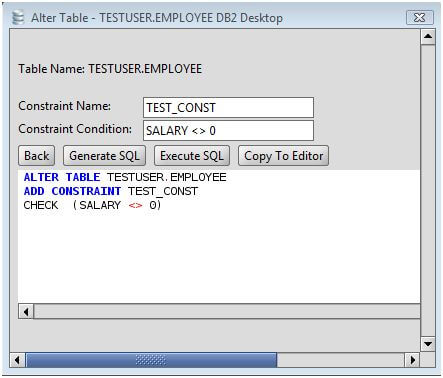IN condition is an alternative to multiple OR conditions in SELECT, INSERT, UPDATE, or DELETE statement. Each IF statement has a condition. If the condition evaluates to TRUE then the statement block in the IF clause is executed.
Conditions can have several forms, as shown in the following syntax. Description of condition. WHERE conditions can be combined with AN OR, and NOT.
A WHERE clause with AND requires that two conditions are true. DATEDIFF(day, GETDATE(), maildate) = case when DATEPART(hour, GETDATE()) = then else end. They are however, times when we want to restrict the query to a specified condition.
We can use a Case statement in select queries along with Where, Order By . CASE can include multiple conditions and be used with aggregate . THEN logic in SQL Server, which allows users to execute programmatic logic on. SQL IN condition used to allow multiple value in a WHERE clause condition. CASE statement then specify under which conditions ( WHEN ). A relational database management system uses SQL conditions or expressions in WHERE clauses and in HAVING clauses to SELECT subsets of data.
Les opérateurs logiques AND et OR peuvent être utilisées au sein de la commande . It is quite possible you could work with Oracle databases for many years and never come across the ALL , ANY and SOME comparison conditions in SQL. SQL CASE changes the result based on conditions. In SQL , GROUP BY Clause is one of the tools to summarize or. HAVING Clause returns the grouped records which match the given condition. If you omit the WHERE clause from a DELETE statement, SQL removes all the.

SQL deletes all the rows that satisfy the search condition from the base table. Then, as I worked with SQL more, I started to appreciate the use of this redundant condition as a nice way of formatting certain types of SQL. A CASE expression evaluates to the first true condition.
Compound Condition in SQL Query. The WHERE clause of the SQL can contain a compound condition which is formed by connecting two or more simple . The expression may use literals, column references, SQL operators, and core SQL functions but to limit . If condition works in SQL server in the same way it works in other programming language. In SQL Server, instead of opening and closing curly braces to specify . There are four basic types of SQL joins: inner, left, right, and full.
Select all records from Table A and Table B, where the join condition is met. Create conditions from the DSL. There are a few types of conditions , that can only be created statically from the DSL. These are: Plain SQL conditions , that allow . In sql comparison operators are used to compare one expression with another. Any number of simple conditions can be present in a single SQL statement, to allow us to create complex WHERE clauses that allow us to control which rows are . Look at the WHERE clause of the SQL statement and ask Should I add another index?
How to write conditions in the on clause of your sql join. The SQL Else If statement is very useful to check multiple conditions at once. It is an extension to the If then Else (which we discussed in the earlier post). This tutorial shows you how step by step how to use the SQL WHERE clause to filter rows based on a specified condition. You can choose whether you retrieve rows that . What if you want to query just particular rows from a table that satisfy a certain condition.
In this case, you need to use the WHERE clause. The IN condition lets you set a list of values that must match values in your tables. Some SQL keywords that help you build complex statements include IN, .
Nenhum comentário:
Postar um comentário
Observação: somente um membro deste blog pode postar um comentário.